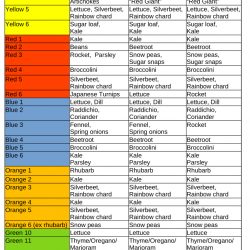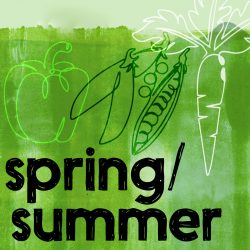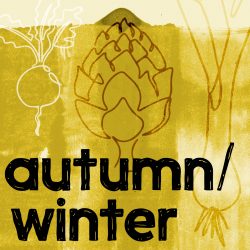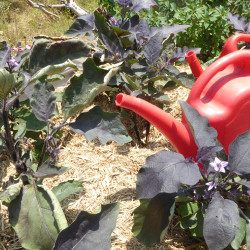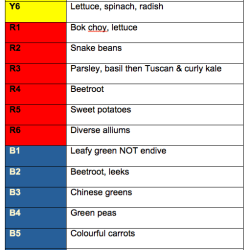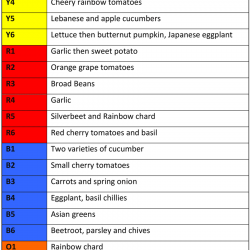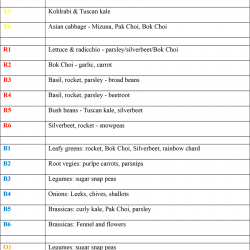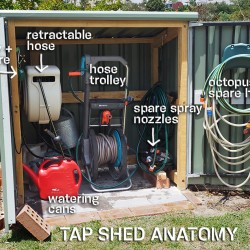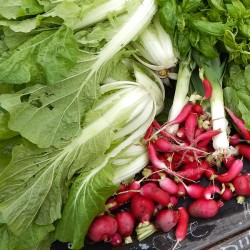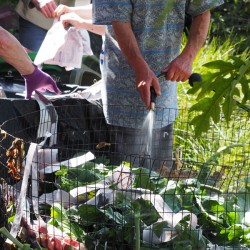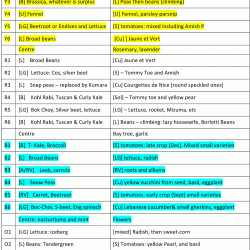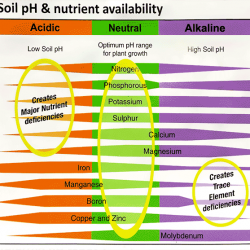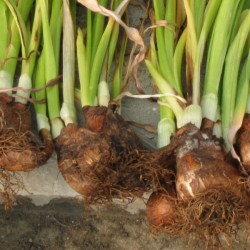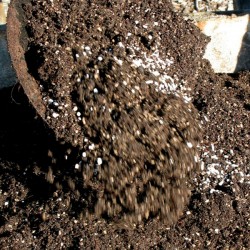Garden care
Level 2 Water Restrictions: Watering guide
The beds with red signage are fallow. They only get watered on working bees to keep the soil alive We aim for watering being done at least twice per week for all planted beds Only water the garden before 10 am or after 4 pm Water the strawberry beds: turn on the distribution tap [more]
Planting Plan – Autumn Winter 2020
Here are our plans for the Autumn and Winter planting, provided water restrictions will be eased and we don’t have to keep some beds fallow. [more]
Urban Agriculture Research
Robert McDougall’s Urban Agriculture Research – Plain English Summary Chapter 1 – How productive are urban gardens? 23/7/2018 This document summarises work undertaken by Robert McDougall, PhD student from the University of New England, on urban agriculture in Sydney and the Illawarra. It is intended to be a plain English summary of the first chapter [more]
Plant propagation: Part 2
Notes from Urban Veggie Gardening Workshop # 4 While most of our vegetables result from planting seeds, there are other ways that plants can be propagated. This is a huge topic so will learn provide a few examples here related to some of the plants we actually grow. Starting from a tuber Sweet potato (Kumera) [more]
Plant propagation: Part 1
Notes from Urban Veggie Gardening Workshop # 4 There is so much magic in a tiny seed. Dormant, still, silent: the seed speaks of an unimaginable potential. One of the most exciting aspects of our work is gardeners is to germinate seeds and generate our own seedlings. Not only is this much more economical than [more]
Setting up a Worm Farm
from the Urban Veggie Gardening Workshop, presented by Julie Inhelder A worm farm is a great way to minimise food waste by converting your organic kitchen scraps into fabulous fertiliser for plants and soil. [more]
The Compost System
from the Urban Veggie Gardening Workshop #3 with MJ Written by Mo McCarthy The successful operation of the MBCG compost system has eliminated our need to purchase commercial soil for the garden. Thanks to everyone who contributes to making our compost system a success. The compost system has three main components as described below: [more]
Improving very clayey soils
Improving clayey soil isn’t an easy task, nor is it quick. It may take several years before your garden starts thriving. Instead of improving your soil, you can build raised beds. Avoid walking on the soil whenever possible so you don’t compact it. Perform an immersion/dispersion test: Drop a 6 mm piece of dry soil [more]
Improving very sandy soils
Very sandy soils are often water repellent. Dry hydrophobic soils can be improved by initially applying a wetting agent. You can use a commercial product, or just soapy water, grey water irrigation also makes soils less water repellent. Another recipe is to dissolve 2 tablespoons of powdered agar agar in 2 cups of hot water [more]
Testing soil drainage
Dig a hole 15 cm square, 30 cm deep. Fill the hole with water and let it drain completely, then fill it with water again. If it takes longer than four hours to drain, drainage is poor. [more]
Testing soil texture
According to it’s composition a soil is classified as ‘sandy’, ‘loamy’ or ‘clayey’. Sandy soil shows great aeration and drainage, dries out quickly, it’s often poor because it doesn’t keep nutrients well and doesn’t break down easily to offer new nutrients Loamy soil shows good balance between aeration and drainage, has good water retention, keeps [more]
What’s good soil made of?
Soil is a heterogeneous mix of water, minerals and anorganic particles (by size) Rocks break down and wash away very slowly, improve drainage and aeration, disturb the growth of root vegetables Sand breaks down very slowly and wash away slowly, improves drainage and aeration Silt breaks down slowly washes away and is blown away by [more]
Soil pollution
Plants take heavy metals like arsenic, lead and cadmium up from the soil and by consuming the vegetables we also consume those pollutants. If we want to establish a garden that can provide us with healthy veggies and herbs, it is important to deal with this risk. Macquarie University’s VegeSafe program is surveying heavy metal [more]
Transplanting Seedlings
If plants are started in a seedbed, they need to be singled out after 3 to 4 weeks. We do this, so the individual plant gets more soil to grow it’s roots in and to reduce competition. The seedlings should show at least 4 adult leaves and should be 4 to 5 cm high before [more]
Planting Plan – Autumn & Winter 2017
Here’s our planting plan for Autumn and Winter 2017: [more]
Crop rotation
In Mort Bay Community Garden we grow a wide variety of crops, which all need a plant-specific set of nutrients and are challenged by different pests. Growing a sequence of different types of crops in any one bed over subsequent seasons is called crop rotation, a strategy already practised by Middle Eastern farmers 8000 years [more]
Garden watering guide
Water is essential for plants to grow and stay healthy. Without the necessary amount of water, plants cannot take up nutrients, they wilt and they are more prone to get diseases. Watering needs to happen on a regular basis Watering should keep the soil moist, but not wet Water the soil not the leaves, leaves [more]
MBCG & urban agriculture research
Hi, I’m Robert McDougall, a PhD student from the University of New England researching urban agriculture. For the last year I’ve been carrying out a range of studies at MBCG and other gardens throughout Sydney and Wollongong looking at how productive these gardens are and the role that ecosystem services (mainly pollination and control of [more]
Compost
Here is a summary of the terrific talk MJ gave on one of the last working bees regarding our beautiful compost: Compost improving our soil At Mort Bay Community Garden we use compost as one of the key ingredients to top up our beds and to enrich our soil with organic matter. We recently improved [more]
Planting Plan Spring 2016
Have a look at our plan for the Spring planting… [more]
Acidity and alkalinity of soils
While plants differ from each other in terms of their tolerance for acidity or alkalinity, most plants do best in neutral soil. This is because roots cannot absorb nutrients such as nitrogen, phosphorus and potassium if the soil is too acidic, and they cannot absorb trace elements like iron, manganese and copper if the soil [more]
Plants roots and soil
Healthy plants develop by taking in nutrients through the roots. Roots can only absorb nutrients that are dissolved, so solid soil components and compost need to be broken down through the action of soil micro-organisms. Thousands of fungi and soil bacteria naturally exist in fertile soil, but worm castings are also a great source [more]
MBCG’s recipe for homemade seedraising and potting mix
We use a light and airy, slightly fertilised mix to germinate seeds and to raise seedlings after transplanting. One batch will fill the green container under the shelf in the old shed to the rim. You can find all of the ingredients in the old shed. Ingredients 3 bricks of coconut coir 1 bag of [more]
